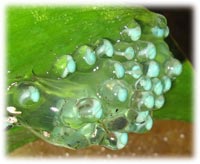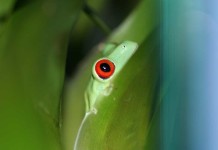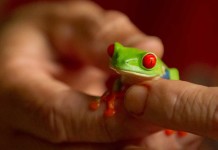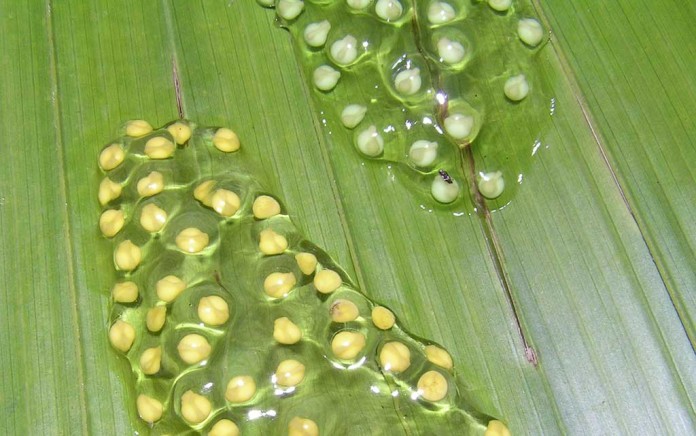The female red eyed tree frog lays its eggs in clutches under cover of leaves high up in the rainforest treetops. They remain there for six days, after which time they have developed into tadpoles and drop to the water below to fully mature. Studies have recently found that the embryos will find pockets of oxygen within the red eyed tree frog egg in order to delay hatching, saving themselves from hungry predators.
The Source of Survival
The red eyed tree frog embryo is amazingly active and self-reliant in the egg. The embryos obtain oxygen from the egg. As the embryo develops, more oxygen is needed to survive. If the embryos hatch early, they risk their survival. Once they fall to the water, they open themselves up to prey.
The embryos instinctively position their gills to areas in the egg with high oxygen levels. It was found in a study conducted by Boston University that even very young embryos that have not even developed gills would instinctually keep themselves positioned near the greatest oxygen supply in the red eyed tree frog egg.
Delaying hatching allows the embryo to develop more and gives them a better chance of escaping the predators in the water below. Embryos can hatch within four days, but six days is the average length of time.
Early Escape
 While the red eyed tree frog embryo holds on longer even when oxygen levels in the egg are lower, they will hatch sooner when threatened by a predator. The embryo can feel the vibrations caused by a snake as it bites into the egg clutch. This alerts the embryos of danger and they fall to the water below, escaping the hungry snake.
While the red eyed tree frog embryo holds on longer even when oxygen levels in the egg are lower, they will hatch sooner when threatened by a predator. The embryo can feel the vibrations caused by a snake as it bites into the egg clutch. This alerts the embryos of danger and they fall to the water below, escaping the hungry snake.
It is amazing to consider that something as tiny as a red eyed tree frog egg is capable of such behavior. Highly instinctual, the red eyed tree frog begins the fight for its survival at a very early stage. It must combat natural predators while still in clutches on the treetop leaves and then faces other predators as it descends to the water below. It faces biological threats while still in the egg and knows what it must do to survive until it is time to hatch.













